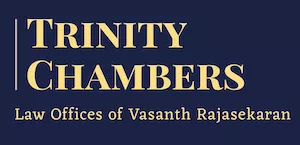- in United States
- with readers working within the Law Firm industries
- within Government, Public Sector, Insolvency/Bankruptcy/Re-Structuring and Real Estate and Construction topic(s)
- with readers working within the Law Firm industries
Introduction
In a landmark ruling, the Full Bench of the Delhi High Court adjudicated upon conflicting views taken by different Division Benches on whether procedural defects, such as the absence of a Statement of Truth or non-filing of the arbitral award, render an application under Section 34 of the Arbitration and Conciliation Act, 1996 ("A&C Act") as non-est. The judgment, delivered in Pragati Construction Consultants v. Union of India [2025:DHC:717-DB], provides much-needed clarity on the threshold requirements for a valid challenge to an arbitral award.
The primary issues before the High Court stemmed from the strict limitation regime prescribed under Section 34(3) of the A&C Act, which allows a challenge to an arbitral award only within three months from the date of receipt of the award, with an additional 30-day window for condonation of delay. Given this rigid timeline, a crucial question arose: should an initial filing, albeit defective, stop the clock for limitation purposes, or should it be deemed non-est, in which case the time continues to run until a valid filing is made?
In this article, we navigate through the findings rendered by the High Court.
Findings of the High Court
The Full Bench of the High Court undertook a meticulous examination of the legal principles governing challenges to arbitral awards, focusing on the interplay between procedural compliance and substantive justice. The judgment reconciled conflicting precedents and clarified the threshold requirements for a valid filing under Section 34 of the A&C Act.
The Threshold for a Valid Section 34 Application
The High Court first addressed the fundamental question, i.e., what constitutes a valid filing under Section 34? It emphasised that an application must, at a minimum, be intelligible, contain clear grounds for setting aside the arbitral award, and be filed with the necessary documents to enable judicial scrutiny. The ruling reaffirmed that while Courts should not adopt an overly rigid approach, there are essential components that a Section 34 application cannot lack.
The High Court adopted a balanced approach, recognising that procedural compliance is important, but it must serve the broader objective of facilitating efficient dispute resolution rather than becoming an obstacle to justice. However, it also held that there are certain omissions so fundamental that they render the application non-est, meaning that it does not amount to a valid filing in the eyes of the law.
Statement of Truth – A Procedural Requirement, but Not Fatal
One of the key issues before the High Court was whether the absence of a Statement of Truth in a Section 34 application would render the petition non-est. The High Court held that while compliance with Order VI Rule 15A of the Code of Civil Procedure, 1908 ("CPC"), is mandatory in commercial disputes, the absence of a Statement of Truth does not ipso facto render a Section 34 petition non-est.
The Court reasoned that a missing Statement of Truth is a procedural irregularity that does not affect the substantive content of the application. The Statement of Truth serves to affirm the correctness of the pleadings and is important for procedural discipline, but its absence does not deprive the Court of the ability to adjudicate the challenge. Accordingly, the High Court held that such a defect is curable and can be rectified after the initial filing, provided that the rectification occurs within a reasonable timeframe.
Non-Filing of the Arbitral Award – A Fundamental Defect
A stark contrast was drawn when the High Court addressed the issue of whether the failure to file a copy of the arbitral award along with the Section 34 application rendered the petition non-est. Here, the High Court took a far more stringent stance. It unequivocally held that an application under Section 34 that does not include a copy of the arbitral award is fundamentally defective and cannot be cured at a later stage.
The High Court reasoned that an arbitral award is the very foundation of a Section 34 challenge. Without it, the Court cannot meaningfully assess the grounds for setting aside the award.
Thus, the High Court held that the omission of the arbitral award at the time of filing rendered the application non-est. It could not be revived by later annexing the award, especially if the valid filing occurred beyond the prescribed limitation period.
Conclusion
The findings of the High Court serve as a landmark clarification on the procedural requirements for a valid Section 34 challenge. The ruling draws a clear distinction between curable defects, such as the absence of a Statement of Truth, and fundamental defects, such as the non-filing of an arbitral award.
The High Court's ruling reinforces the strict limitation framework under Section 34(3) of the Arbitration Act, ensuring that procedural compliance does not become a loophole for delaying arbitration challenges. At the same time, it adopts a pragmatic approach by allowing minor defects to be remedied within a reasonable period.
The content of this article is intended to provide a general guide to the subject matter. Specialist advice should be sought about your specific circumstances.



